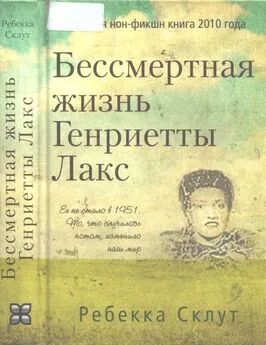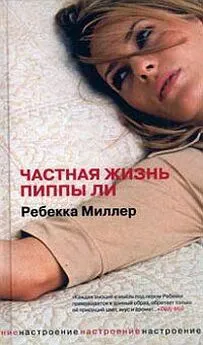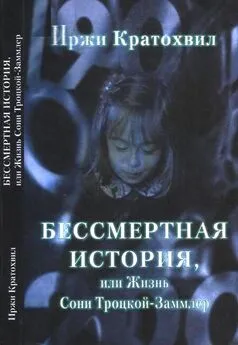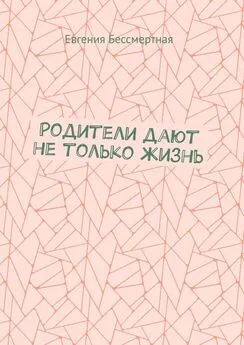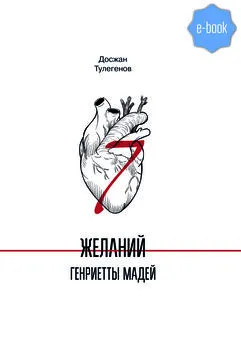Ребекка Склут - Бессмертная жизнь Генриетты Лакс
- Название:Бессмертная жизнь Генриетты Лакс
- Автор:
- Жанр:
- Издательство:Карьера Пресс
- Год:2012
- Город:Москва
- ISBN:978-5-904946-13-6
- Рейтинг:
- Избранное:Добавить в избранное
-
Отзывы:
-
Ваша оценка:
Ребекка Склут - Бессмертная жизнь Генриетты Лакс краткое содержание
Книга, которая потрясла мир в 2010 году. Бестселлер, побивший все мыслимые рекорды продаж.
Кто имеет право на наше тело, или его части, или биоматериал, взятый для анализов: мы, врачи, ученые..? Впервые удалось культивировать «бессмертные» клетки человеческого тела в 1950-х. Это буквально перевернуло всю медицинскую науку. Клетки HeLa помогли разработать вакцины от полиомиелита, раскрыть секреты раковых заболеваний, вирусов и влияния ядерного взрыва; они помогли сделать важные шаги в изучении искусственного оплодотворения, клонирования и составления генетических карт.
И неизбежно стали предметом «купли-продажи»: одни богатели, другие и не подозревали, что над ними проводят «опыты».
Это книга — драматичная история о судьбе простой женщины, которая подарила миру свои бессмертные клетки, о честных и нечестных врачах, о судебных баталиях, рождении биоэтики. Красивое и драматичное научное исследование, от которого невозможно оторваться.
Некоторые отрывки этой книги появлялись в различной форме в статьях: «Взять частичку тебя» в журнале New York Times Magazine (© 2006 by Rebecca Skloot); «Танец Генриетты», журнал Johns Hopkins Magazine (© 2000 by Rebecca Skloot); «Довольно патентовать ген рака молочной железы», журнал Slate's Double X (© 2009 by Rebecca Skloot).
Бессмертная жизнь Генриетты Лакс - читать онлайн бесплатно ознакомительный отрывок
Интервал:
Закладка:
Глава 17. Незаконное, аморальное и прискорбное
Об инъекциях раковых клеток, которые делал Саутэм, написано во многих научных статьях, автором или соавтором которых он был, в том числе: Neoplastic Changes Developing in Epithelial Cell Lines Derived from Normal Persons. — Science 124, no. 3212 (July 20, 1956); письмо Transplantation of Human Tumors. — Science 125, no. 3239 (January 25,1957); Homotransplantation of Human Cell Lines. — Science 125, no. 3239 (January 25, 1957); Applications of Immunology to Clinical Cancer Past Attempts and Future Possibilities. — Cancer Research 21 (October, 1961): 1302–16; History and Prospects of Immunotherapy of Cancer. — Annals of the New York Academy of Sciences 277, no. 1 (1976).
О тюремных исследованиях Саутэма рассказывается в следующих газетных статьях: Convicts to Get Cancer Injection. — New York Times, May 23, 1956; Cancer by the Needle. — Newsweek, June 4, 1956; 14 Convicts Injected with Live Cancer Cells. — New York Times, June 15, 1956; Cancer Volunteers. — Time, February 25, 1957; Cancer Defenses Found to Differ. — New York Times, April 15,1957; Cancer Injections Cause ‘Reaction’. — New York Times, July 18, 1956; Convicts Sought for Cancer Test. — New York Times, August 1, 1957.
Наиболее подробно инъекции раковых клеток, которые делал Саутэм, и последовавшие за тем слушания по его делу описаны в работе: Jay Katz. Experimentation with Human Beings, где собраны оригиналы обширной переписки, судебных документов и других материалов, которые иначе могли потеряться, ибо совет попечителей не сохранил их. Также см.: Jay Katz. Experimentation on Human Beings. — Stanford Law Review 20 (November, 1967). Судебные иски Хаймэна см.: William A. Hyman v. Jewish Chronic Disease Hospital (42 Misc. 2d 427; 248 N.Y.S.2d 245; 1964 and 15 N.Y.2d 317; 206 N.E.2d 338; 258 N.Y.S.2d 397; 1965). Также см. иск пациента Alvin Zeleznik v. Jewish Chronic Disease Hospital (47 A.D.2d 199; 366 N.Y.S.2d 163; 1975). Статью Г. Бичера см. Н. Beacher. Ethics and Clinical Research. — New England Journal of Medicine 274, no. 24 (June 16, 1966).
Этические дебаты вокруг «проблемы Саутэма» были отражены в прессе в новостных материалах, в том числе: Scientific Experts Condemn Ethics of Cancer Injection. — New York Times, January 26, 1964; Earl Ubell. Why the Big Fuss. — Chronicle-Telegram, January 25, 1961; Elinor Langer. Human Experimentation: Cancer Studies at Sloan-Kettering Stir Public Debate on Medical Ethics. — Science 143 (February 7, 1964); Elinor Langer. Human Experimentation: New York Verdict Affirms Patient Rights. — Science (February 11, 1966).
Каждому, кто интересуется историей исследований на людях и их этической стороной, стоит прочесть книгу Susan Е. Lederer. Subjected to Science: Human Experimentation in America Before the Second World War, равно как и работу George J. Annas and Michael A. Grodin. The Nazi Doctors and the Nuremberg Code: Human Rights in Human Experimentation. Обе эти книги были важными источниками при написании этой главы. Историю экспериментов над заключенными см. Allen Hornblum Acres of Skin: Human Experiments at Holmesburg Prison, который брал у Саутэма интервью незадолго до его смерти и любезно поделился со мной полученной информацией.
Более подробно об истории биоэтики, в том числе об изменениях, последовавших после «проблемы Саутэма», см. Albert R. Jonsen. The Birth of Bioethics; David J. Rothman. Strangers at the Bedside: a History of How Law and Bioethics Transformed Medical Decision Making; George J. Annas. Informed Consent to Human Experimentation: The Subject s Dilemma; M. S. Frankel. The Development of Policy Guidelines Governing Human Experimentation in the United States: A Case Study of Public Policy-making for Science and Technology. — Ethics in Science and Medicine 2, no. 48 (1975); а также R. B. Livingston. Progress Report on Survey of Moral and Ethical Aspects of Clinical Investigation: Memorandum to Director, NIH (Novenber 4, 1964).
Подробно об истории информированного согласия см.: Ruth Faden and Tom Beauchamp A History and Theory of Informed Consent. Относительно информации о первом судебном процессе, где упоминалось «информированное согласие», см.: Salgo v. Leland Stanford Jr. Unversity Board of Trustees (Civ. No. 17045. First Dist., Div.One, 1957).
Глава 18. Самая странная гибридная форма жизни
Инструкции по выращиванию HeLa в домашних условиях были опубликованы в статье: C. L. Stong. The Amateur Scientist: How to Perform Experiments with Animal Cells Living in Tissue Culture. — Scientific American, April 1966.
Источники по истории исследований культур клеток в космосе включают в себя: Allan A. Katzberg. The effects of Space Flights on Living Human Cells. — Lectures in Aerospace Medicine, School of Aerospace Medicine (1960); K. Dickson. Summary of Biological Spaceflight Experiments with Cells. — ASGSB Bulletin 4, no. 2 (July 1991).
Хотя исследование клеток HeLa в космосе было законным и полезным, однако теперь известно, что оно являлось частью прикрытия разведывательного проекта, одной из целей которого было фотографирование территории Советского Союза из космоса. Относительно использования «биологической полезной нагрузки» в качестве прикрытия шпионских задач см.: Eye in the Sky: The Story of the Corona Spy Satellites. Edited by Dwayne A. Day et al.
Впервые предположение о возможном заражении клетками HeLa было высказано Л. Кориеллом в работе: L. Coriell et al. Common Antigens in Tissue Culture Cell Lines. — Science, July 25, 1958. Другие ресурсы, авторы которых одними из первых высказали опасение о заражении культур: L. B. Robinson et al. Contamination of Human Cell Cultures by Pleuropneumonialike Organisms. — Science 124, no. 3232 (December 7, 1956); R. R. Gurner, R. A. Coombs, and R. Stevenson. Results of Tests for the Species of Origins of Cell Lines by Means of the Mixed Agglutination Reaction. — Experimental Cell Research 28 (September, 1962); R. Dulbecco. Transformation of Cells in Vitro by Viruses. — Science 142 (November 15, 1963); R. Stevenson. Cell Culture Collection Committee in the United States // Cancer Cells in Culture, edit. H. Katsuta (1968). Историю ATCC cm. R. Stevenson. Collection, Preservation, Characterization and Distribution of Cell Cultures. — Proceedings, Symposium on the Characterization and Uses of Human Diploid Cell Strains: Opatija (1963); а также U. Clark and D. Geary The Story of the American Type Culture Collection: Its History and Development (1899–1973). — Advances in Applied Microbiology 17 (1974).
Важные источники о ранних исследованиях клеточных гибридов: Barski, Sorieul and Cornefert. Production of Cells of a ‘Hybrid’ Nature in Cultures in Vitro of 2 Cellular Strains in Combination. — Comptes Rendus Hebdomadaires des Séances de l’Académie des Sciences 215 (October 24, 1960); H. Harris и J. F. Watkins. Hybrid Cells Derived from Mouse and Man: Artificial Heterokaryons of Mammalian Cells from Different Species. — Nature 205 (February 13, 1965); M. Weiss и H. Green. Human — Mouse Hybrid Cell Lines Containing Partial Complements of Human Chromosomes and Functioning Human Genes. — Proceedings of the National Academy of Sciences 58, no. 3 (September 15, 1967); а также В. Ephrussi and C. Weiss. Hybrid Somatic Cells. — Scientific American 20, no. 4 (April, 1969).
Относительно дополнительной информации об исследовании гибридов Харрисом см.: The Formation and Characteristics of Hybrid Cells // in Cell Fusion: The Dunham Lectures (1970); The Cells of the Body: A History of Somatic Cell Genetics; Behaviour of Differentiated Nuclei in Heterokaryons of Animal Cells from Different Species. — Nature 206 (1965); The Reactivation of the Red Cell Nucleus. — Journal of Cell Science 2 (1967); H. Harris and P. R. Harris. Synthesis of an Enzyme Determined by an Erytrocyte Nucleus in a Hybrid Cell. — Journal of Cell Science 5 (1966).
Широкое освещение в прессе: Man-Animal Cells Are Bred in Lab. — The [London] Sunday Times (February 14, 1965); а также Of Mice and Men. — Washington Post (March 1, 1965).
Глава 20. Бомба HeLa
При работе над этой главой я основывалась на сообщениях и прочих документах, которые находятся в АМСА и ТСАА, а также на The Proceedings of the Second Decennial Review Conference on Cell Tissue and Organ Culture. — The Tissue Culture Association, Held on September 11–15, 1966. — National Cancer Institute Monographs 58, no. 26 (November 15, 1967).
При написании этой главы я пользовалась большим количеством научных документов о заражении культур, в том числе: S. M. Gartler. Apparent HeLa Cell Contamination of Human Heteroploid Cell Lines. — Nature 217 (February 4, 1968); N. Auersberg and S. M. Gartler / Isoenzyme Stability in Human Heteroploid Cell Lines. — Experimental Cell Research 61 (August, 1970); E. E. Fraley, S. Ecker and M. M. Vincent. Spontaneous in Vitro Neoplastic Transformation of Adult Human Prostatic Epithelium. — Science 170, no. 3957 (October 30, 1970); A. Yoshida, S. Watanabe, and S. M. Gartler. Identification of HeLa Cell Glucose 6-phosphate Dehydrogenase. — Biochemical Genetics 5 (1971); W. D. Peterson et al. Glucose 6-phosphate Dehydrogenase Isoenzymes in Human Cell Cultures Determined by Sucrose-Agar Gel and Cellulose Acetate Zymograms. — Proceedings of the Society for Experimental Biology and Medicine 128, no. 3 (July, 1968); Y. Matzuya and H. Green. Somatic Cell Hybrid Between the Established Human Line D98 (presumptive HeLa) and 3T3. — Science 163, no. 3868 (February 14, 1969); а также C. S. Stulberg, L. Coriell et al. The Animal Cell Culture Collection. — In Vitro 5 (1970).
Подробности о спорах по поводу заражения см.: Michael Gold. A Conspiracy of Cells.
Читать дальшеИнтервал:
Закладка:
